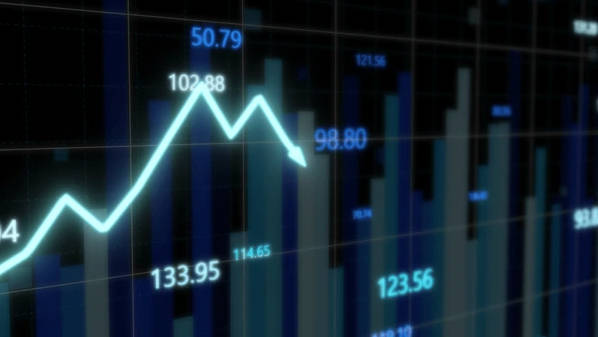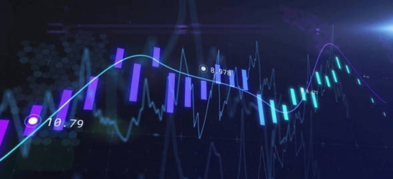Important Information
This website is managed by Ultima Markets’ international entities, and it’s important to emphasise that they are not subject to regulation by the FCA in the UK. Therefore, you must understand that you will not have the FCA’s protection when investing through this website – for example:
- You will not be guaranteed Negative Balance Protection
- You will not be protected by FCA’s leverage restrictions
- You will not have the right to settle disputes via the Financial Ombudsman Service (FOS)
- You will not be protected by Financial Services Compensation Scheme (FSCS)
- Any monies deposited will not be afforded the protection required under the FCA Client Assets Sourcebook. The level of protection for your funds will be determined by the regulations of the relevant local regulator.
Note: Ultima Markets is currently developing a dedicated website for UK clients and expects to onboard UK clients under FCA regulations in 2026.
If you would like to proceed and visit this website, you acknowledge and confirm the following:
- 1.The website is owned by Ultima Markets’ international entities and not by Ultima Markets UK Ltd, which is regulated by the FCA.
- 2.Ultima Markets Limited, or any of the Ultima Markets international entities, are neither based in the UK nor licensed by the FCA.
- 3.You are accessing the website at your own initiative and have not been solicited by Ultima Markets Limited in any way.
- 4.Investing through this website does not grant you the protections provided by the FCA.
- 5.Should you choose to invest through this website or with any of the international Ultima Markets entities, you will be subject to the rules and regulations of the relevant international regulatory authorities, not the FCA.
Ultima Markets wants to make it clear that we are duly licensed and authorised to offer the services and financial derivative products listed on our website. Individuals accessing this website and registering a trading account do so entirely of their own volition and without prior solicitation.
By confirming your decision to proceed with entering the website, you hereby affirm that this decision was solely initiated by you, and no solicitation has been made by any Ultima Markets entity.
I confirm my intention to proceed and enter this website Please direct me to the website operated by Ultima Markets , regulated by the FCA in the United KingdomTop 5 Most Volatile Forex Pairs to Watch
In the world of forex trading, volatility plays a significant role in determining potential profit and risk. For traders looking to maximise returns, the most volatile forex pairs are often the focus. These currency pairs experience larger price swings, which can present both higher risks and higher rewards. Understanding these volatile pairs and knowing how to trade them is essential for anyone looking to capitalise on market movements.
In this article, we’ll explore the most volatile forex pairs, what volatility means in the forex market, and how you can use volatility to your advantage when trading.
What is Volatility in Forex?

Volatility refers to the extent of price fluctuations in a currency pair over time. The more a currency pair moves in price, the higher the volatility. Traders often look for volatile pairs because they provide more trading opportunities as the price swings more dramatically. However, while volatility can lead to higher rewards, it also means more risk. Understanding and measuring volatility is key to successfully trading in these fast-moving markets.
Measuring Volatility in Forex
There are several ways to measure volatility, but two of the most popular methods are Average True Range (ATR) and Standard Deviation. ATR calculates the average price range of a currency pair over a specific period, while Standard Deviation measures how much the price deviates from its average. The wider the range, the higher the volatility. Volatility can also be tracked visually with Bollinger Bands, which expand or contract depending on market conditions.
For example, if the ATR of EUR/USD is 50 pips, this means the pair typically moves 50 pips during that time. Major pairs like EUR/USD, USD/JPY, and GBP/USD generally show lower volatility compared to more exotic pairs. Exotic pairs, like USD/TRY or USD/ZAR, often have higher volatility due to their lower liquidity and greater sensitivity to global events. The USD/ZAR pair frequently experiences dramatic price swings that can exceed 1000-1500 pips per day, making it one of the most volatile pairs in the market.
Top 5 Most Volatile Forex Pairs

Here are the most volatile forex pairs that traders should keep an eye on. These pairs are known for their wide price swings, making them appealing for short-term traders, especially those who thrive on high-risk, high-reward strategies.
1. AUD/JPY (Australian Dollar / Japanese Yen)
- Average Daily Range: 70-100 pips
The AUD/JPY pair is one of the most volatile due to a mix of factors. The Australian Dollar is a commodity currency, heavily influenced by global commodity prices, particularly metals and energy. Meanwhile, the Japanese Yen tends to act as a safe haven, gaining strength during times of uncertainty in the market. The NZD/JPY pair generally has daily price fluctuations between 60 to 90 pips, further highlighting its appeal to traders seeking volatility.
Why It’s Volatile: The volatility in AUD/JPY peaks during the Asian trading session, as both Australia and Japan are in close proximity geographically and are often impacted by similar global factors. The combination of commodity price fluctuations and shifts in risk sentiment creates sharp price movements, making it one of the most sought-after pairs for high-risk, high-reward traders.
2. NZD/JPY (New Zealand Dollar / Japanese Yen)
- Average Daily Range: 70-100 pips
Much like AUD/JPY, the NZD/JPY pair is volatile due to its connection to commodity prices and the JPY’s safe-haven status. The New Zealand Dollar (NZD) is closely tied to agricultural exports, particularly dairy, and its movements are heavily impacted by global demand for these commodities.
Why It’s Volatile: The NZD/JPY pair is at its most volatile during both the Asian and early European sessions. Shifts in global risk sentiment, coupled with New Zealand’s exposure to commodity price swings, lead to sharp price movements, making it a popular choice for traders seeking volatility in the forex market.
3. GBP/AUD (British Pound / Australian Dollar)
- Average Daily Range: 100-150 pips
The GBP/AUD pair is known for its high volatility, particularly during the overlapping UK-Asian trading sessions. The British Pound reacts to UK economic data and political events (like Brexit), while the Australian Dollar is influenced by commodity prices, especially those linked to China and global demand for natural resources. This pair is also known for its moderate to high volatility due to the economic conditions of the UK and Australia.
Why It’s Volatile: The volatility in GBP/AUD tends to peak when both the UK and Asian markets are active, with a significant number of economic releases from both regions causing rapid price swings. Traders can capitalise on these price fluctuations during these overlapping hours, where market activity is at its highest.
4. EUR/GBP (Euro / British Pound)
- Average Daily Range: 50-80 pips
The EUR/GBP pair, while not as volatile as some of the exotic pairs, still sees significant price swings, especially during European trading hours. Both the Euro and the British Pound are major currencies, and their movements are closely tied to economic reports and central bank actions in their respective regions.
Why It’s Volatile: This pair is most volatile during economic data releases and policy announcements from the European Central Bank (ECB) and the Bank of England (BoE). With Brexit still affecting market sentiment, any political or economic development in the UK or the Eurozone can cause rapid price movements.
5. USD/TRY (US Dollar / Turkish Lira)
- Average Daily Range: 1000-2000 pips
The USD/TRY pair is by far one of the most volatile pairs in the forex market. The Turkish Lira is highly sensitive to political instability, economic challenges, and inflation within Turkey. This makes USD/TRY prone to extreme price movements, often exceeding 1,000 pips a day.
Why It’s Volatile: Geopolitical instability, central bank policy changes, and global risk sentiment drive significant fluctuations in the USD/TRY pair. The Turkish Lira’s erratic behaviour, especially during times of political unrest or economic turmoil, makes it one of the most volatile pairs traders can encounter.
Risks of Trading Volatile Forex Pairs

While volatility presents opportunities, it also comes with risks. The larger the price swings, the greater the potential for both profit and loss. Volatile pairs can lead to sudden, large losses if not carefully managed. Exotic pairs, in particular, often experience higher volatility due to political instability, economic policies, and lower liquidity, making them especially risky.
To manage the risks, always use risk management strategies like stop-loss orders and smaller position sizes. Avoid emotional trading, as volatility can trigger impulsive decisions. Stick to your strategy, and remember that high volatility can be both an opportunity and a threat. Position sizing becomes crucial when trading volatile pairs, and traders can consider reducing their standard position size by 30-50% to mitigate potential losses.
Conclusion
At the end of the day, the most volatile forex pairs offer traders significant opportunities for profit due to their large price swings. However, do remember that volatility also comes with increased risk. To trade these pairs successfully, you will need to use effective risk management techniques, constantly stay updated on global economic events, and ensure you have the right strategy in place.
Ready to take advantage of forex market volatility? Open an account with Ultima Markets today and start trading with expert tools and strategies!
Disclaimer: This content is provided for informational purposes only and does not constitute, and should not be construed as, financial, investment, or other professional advice. No statement or opinion contained here in should be considered a recommendation by Ultima Markets or the author regarding any specific investment product, strategy, or transaction. Readers are advised not to rely solely on this material when making investment decisions and should seek independent advice where appropriate.












